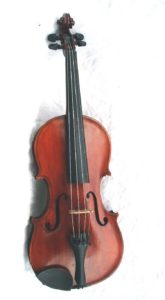 Sessions are an integral part of trad music[/caption]
Sessions are an integral part of trad music[/caption]Trad Sessions
Unfortunately even among trad music circles there is an increasing intolerance for those who are not “up to the mark.” Where once, even only thirty years ago, sessions would be happy to let people join who were obviously just learning, perhaps quietly whispering an aside to sit out for a moment while a particularly difficult piece was tackled or someone took a solo, it’s obvious that today many sessions are seriously intolerant of people who can’t keep up to speed. In Scotland you could often be at a ceilidh and find that in the early part of the evening there were children sitting in and the tunes would be simpler; as the night progressed the young ones would be off to bed and the more demanding reels and strathspeys would begin to ring out.
I believe that this is mainly due to the fact that we have lost the close cultural tradition of family and friends playing together at ceilidhs in the home that was the nurture of so many great players in the past. Together with this is the issue of payment; it is common now for the session leader and often several other musicians to be paid by the venue, and the venue owner rightly has an interest in the quality of the output. However the session tradition began in the home, where nobody got paid and everyone was connected by family and friendship. It was in the interest of older players to see younger ones learn because they were teaching their own families, in effect.
Public Sessions
Nowadays most sessions are in public places. The players are only connected by the fact that they can play, and if you can’t play you’re out. This means that less experienced players have to work alone or with a teacher before they tackle even a “slow session.”
Although it means that the music is probably better and more consistent for the non-playing listeners than it used to be, the fact is that this “Don’t bother sitting in unless you can cut the mustard” approach cuts right against the traditions that gave us the rich harvest of traditional music we now enjoy. Thirty years ago at local sessions less talented players would sit in with the better ones and play along until the music reached a point where they could no longer keep up, and the evening would end with four or five of the best belting it out while everyone else packed their instruments and joined the dancers. The danger from this rigidity is not only that newer players will be put off, but also that the music itself becomes sterile, like a museum piece. That is not what traditional music is about.
Now this willingness to accommodate less experienced players presupposed a willingness on the part of the tyro to actually learn the music that was being played. The loss of this willingness is deeply regrettable and I would like to see it reversed. What never was acceptable, however, and never should be, is for someone to just sit in and jam another style of music on top of the music the session plays. Blues guitarists adding a funky riff to a traditional reel were always likely to be asked to cut it out, and quite right too. Trad sessions are NOT jam sessions. Trad sessions revolve around a known repertoire that must be played by the rules of the particular music; jam sessions, at least as understood within blues and jazz are about taking a very basic and simple theme and developing it, exploring and changing the music. There are few if any rules; frequently even the original chord progression is so modified it is lost. Although both of these approaches involve improvisation they are really very different, reflecting two separate musical cultures; the traditional, where a large repertoire of often complex tunes is shared between players who learn and develop together, and the blues, where a really simple central structure is used to expand into myriad different and new forms. These two musical cultures are both extremely valuable but they are very difficult to mix, though there is no reason why a hot blues player can’t also be a great trad player. Just not at the same time.
No comments:
Post a Comment